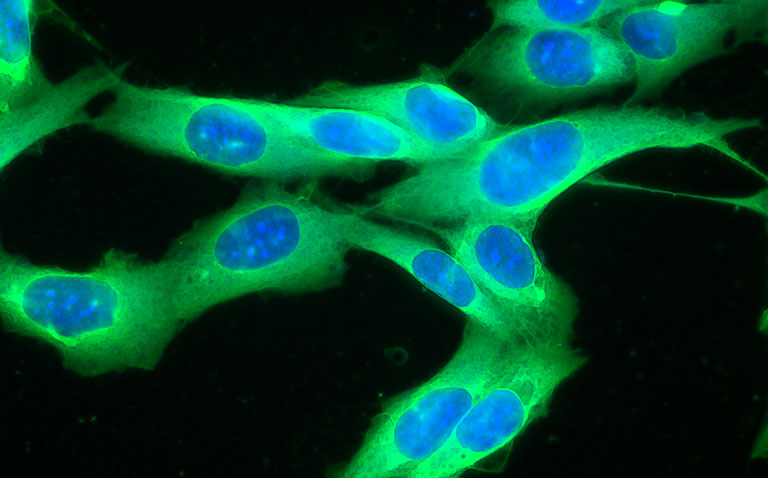Researchers from the University of Leeds in the UK have discovered that vitamin D influences the behaviour of a signalling pathway within melanoma cells.
Although this is early research, the findings could ultimately lead to new ways to treat melanoma. The research is published in Cancer Research
Scientists have previously known that lower levels of vitamin D circulating in the body have been linked to worse outcomes for people with melanoma, but they haven’t fully understood the mechanisms that cause this.
Professor Newton-Bishop from the University of Leeds and her team wanted to see what processes were being regulated by vitamin D in melanoma cells, and what happens when there is a lack of a protein on the surface of the melanoma cells called a vitamin D receptor (VDR), which enables vitamin D to bind to the cell’s surface.
The researchers looked at the activity of the gene that makes VDR in 703 human melanoma tumours, and 353 human melanoma tumours that had spread from the initial site. The activity of the VDR gene was cross-referenced with other patient characteristics, such as the thickness of their tumour and how fast their tumor grew. They also wanted to see if the amounts of VDR in human melanoma cells were associated with genetic changes that happen when tumours become more aggressive. They then used mice to check whether VDR levels changed the cancer’s ability to spread.
The team found that human tumours with low levels of the VDR gene grew faster, and had a lower activity of genes that control pathways that help the immune system fight cancer cells.
They also discovered that tumours with lower VDR levels also had a higher activity of genes linked to cancer growth and spread, especially those controlling the Wnt/β-catenin signalling pathway, which helps to modulate a variety of biological processes within the cell, such as its growth.
In mice, the researchers found that increasing the amount of VDR on the melanoma cells reduced activity of the Wnt/β-catenin pathway, and slowed down the growth of the melanoma cells. They also found that the cancer was less likely to spread to their lungs.
Professor Newton-Bishop said: “After years of research, we finally know how vitamin D works with VDR to influence the behaviour of melanoma cells by reducing activity of the Wnt/β-catenin pathway. This new puzzle piece will help us better understand how melanoma grows and spreads, and hopefully find new targets to control it.
“But what’s really intriguing, is that we can now see how vitamin D might help the immune system fight cancer. We know when the Wnt/β-catenin pathway is active in melanoma, it can dampen down the immune response causing fewer immune cells to reach the inside of the tumour, where they could potentially fight the cancer better.
“Although vitamin D on its own won’t treat cancer, we could take insights from the way it works to boost the effects of immunotherapy, which uses the immune system to find and attack cancer cells.”
Martin Ledwick, Head Information Nurse at Cancer Research UK, said: “Vitamin D is important for our muscle and bone health and the NHS already recommends getting 10 micrograms per day as part of our diet or as supplements, especially in the winter months.
“People who have been newly diagnosed with melanoma should have their vitamin D levels checked and managed accordingly. If you are worried about your vitamin D levels, it’s best to speak to your doctor who can help ensure you are not deficient.”










